10.4 Part Writing, Second Inversion Triads: Theory exercises
In addition to Workbook Chapters 10.4.1 and 10.4.2, see the examples below.
Part writing with second inversion chords
The bass voice will be doubled in all second inversion triads. Beyond that generalization, you must follow the part writing guidelines specific to each chord. Let’s look at examples for each type of 6/4 chord.
Exercise 1
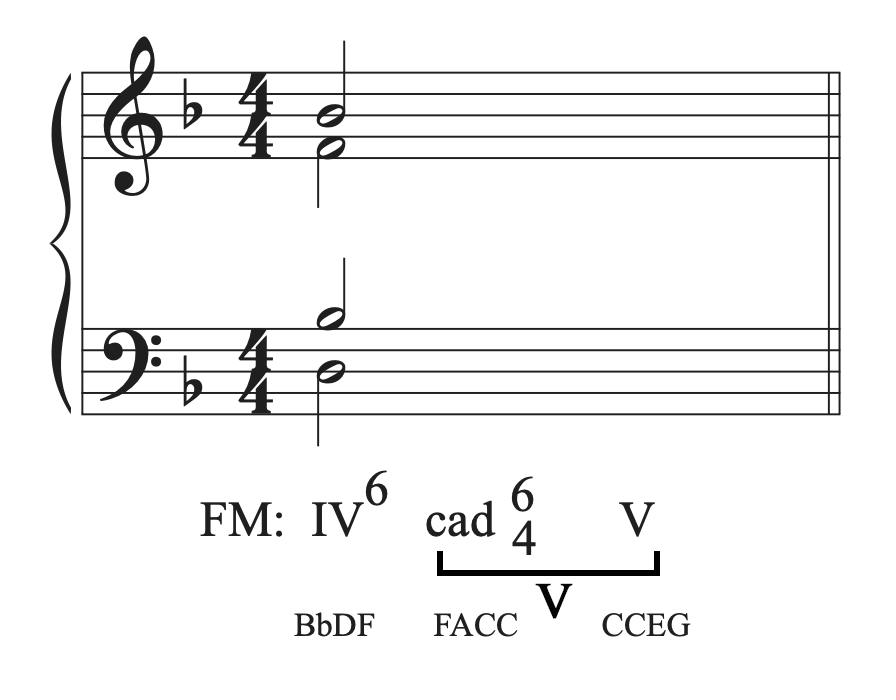
In this example, we are part writing a cadential 6/4 chord. Step 1 is to write the names of the notes in each chord using proper doubling and accidentals. Next, write the bass line in for the cad 6/4 and V chords. They both have scale degree 5 in the bass. One of the upper voices also shares that same common tone between both chords. In this example, both the tenor and soprano have scale degree 5 in the previous chord, so you must choose which voice to use to continue the common tone. One of the typical features of the cadential 6/4 chord is the downward stepwise motion in the soprano voice. For that reason, choose the tenor to hold the common tone so that the soprano can move down by step.
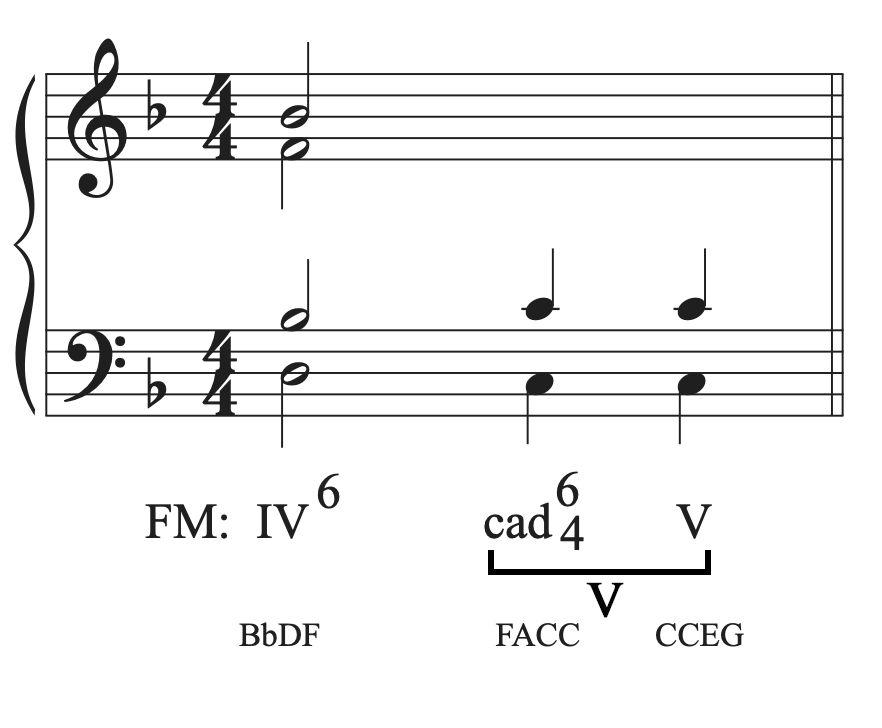
The remaining upper voices need to move down by step. They form the intervals of 6-5 and 4-3 with the bass. Let’s insert the 6-5 interval first. The soprano voice will create those intervals with the bass.
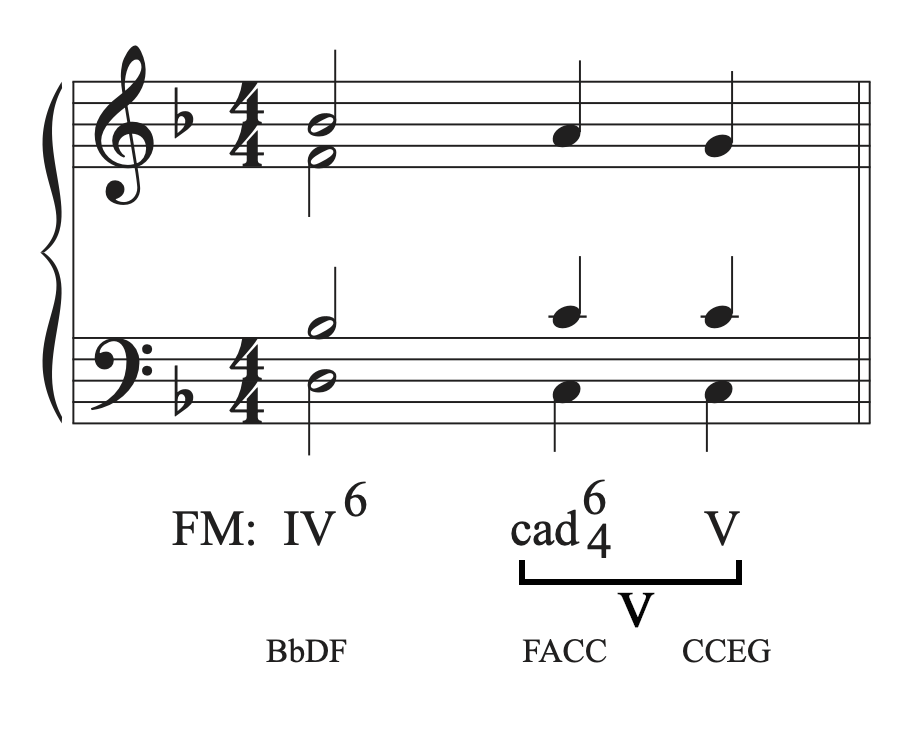
Then, part write the remaining voice. It will create the intervals 4-3 with the bass.
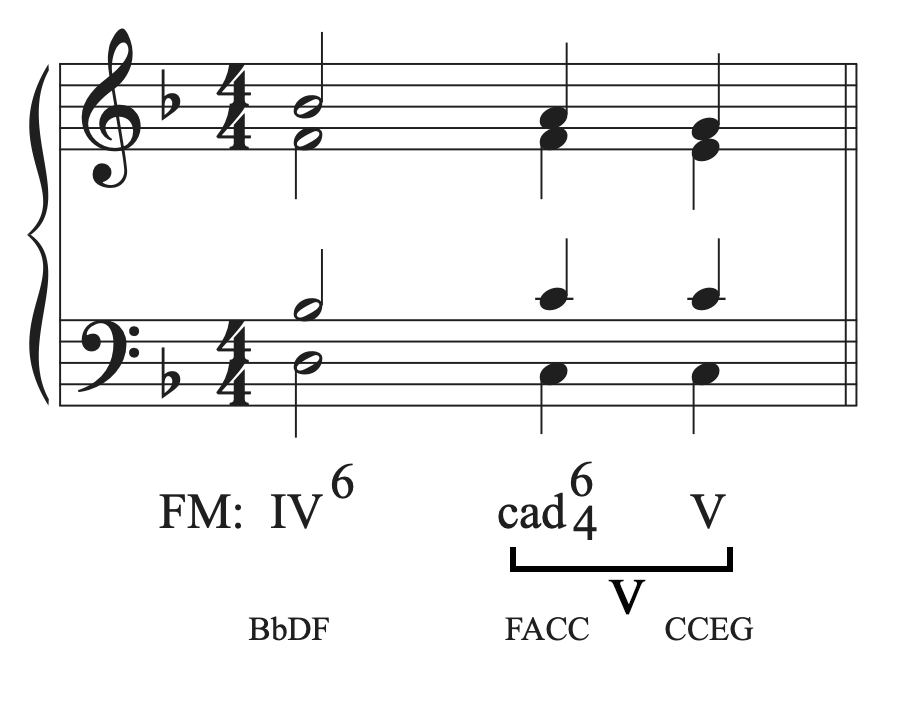
Always double check the notes in each chord after you complete the part writing. Because each chord has a specific part writing shape, it’s easy to create the shape on the wrong pitches. Make it a habit to always double check your chord spellings when part writing second inversion chords.
Example 2
Let’s look at another example and determine the type of 6/4 chord used.
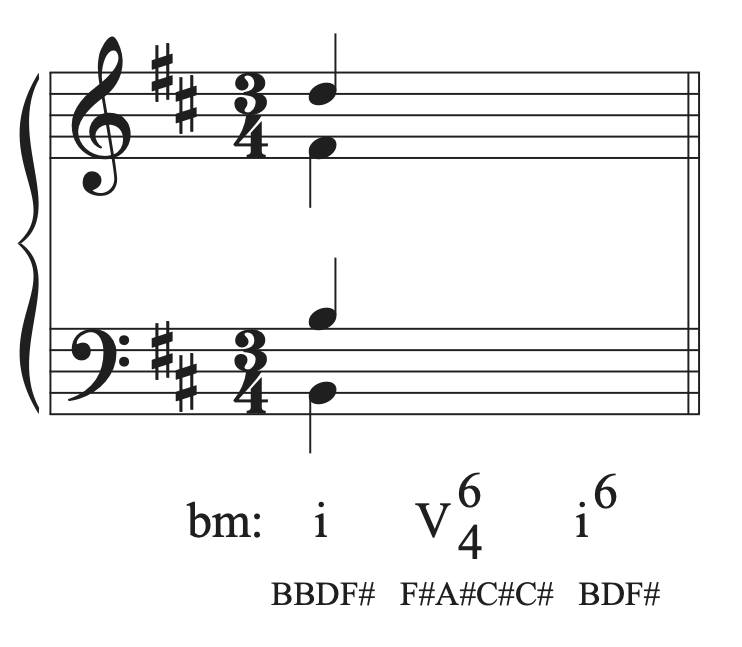
The chord progression used is i V6/4 i6, which will create a stepwise bass line. That means this is a passing 6/4 because it is the only 6/4 chord that uses a stepwise bass line.
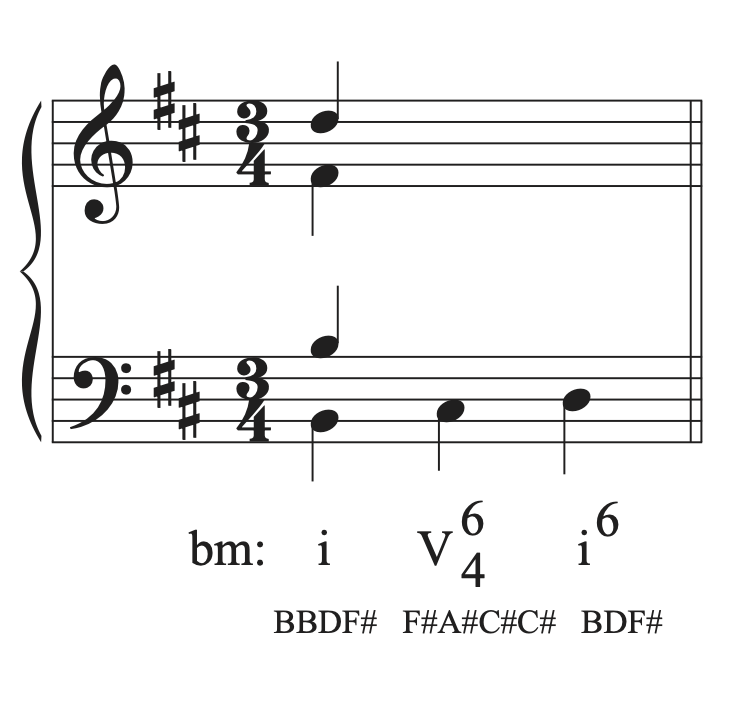
Next, we can find the voice that will move downward by step in contrary motion to the bass. The only voice that can move down by step and use notes possible in the V6/4 and i6 chords is the soprano. Insert the descending passing motion in the soprano.
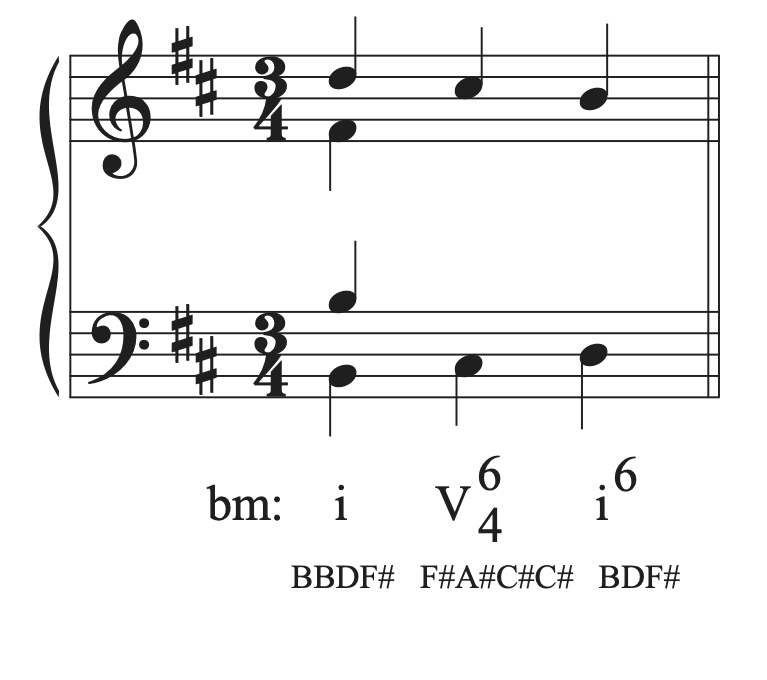
Next, let’s add the common tone between the three chords. The only note that all three chords share is F#.

The remaining voice will create a lower neighbor motion. Don’t forget to raise the leading tone.
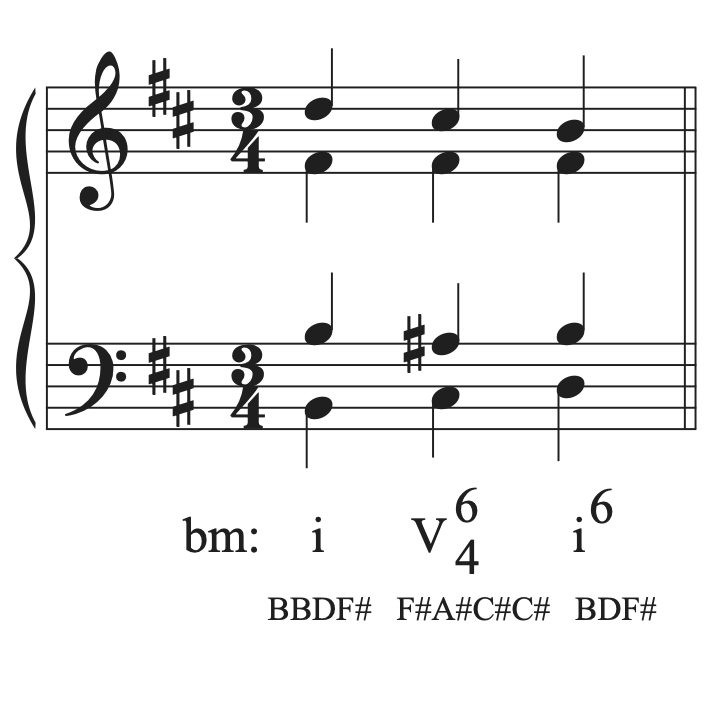
After the part writing is complete, remember to check your answer to make sure each chord was spelled using the correct notes and doubling.
Example 3
Let’s look at another example and determine the type of 6/4 chord used. In this example, the chord progression I IV6/4 I creates a common tone in the bass between all three chords. That means this has to be a pedal 6/4.
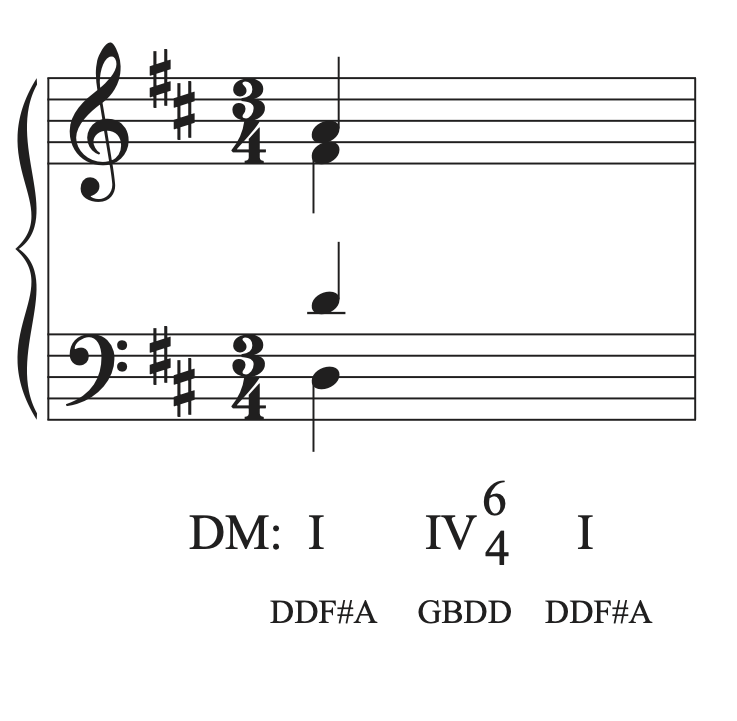
One of the upper voices will double the bass, keeping a common tone between all three chords. That voice is the tenor voice in this example.
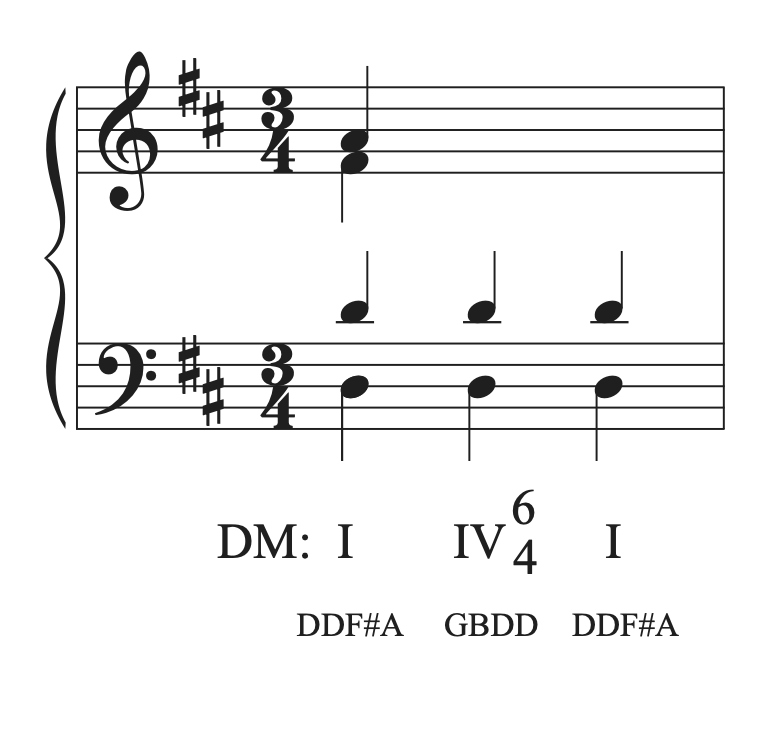
The remaining two upper voices create upper neighbor motion between the three chords.
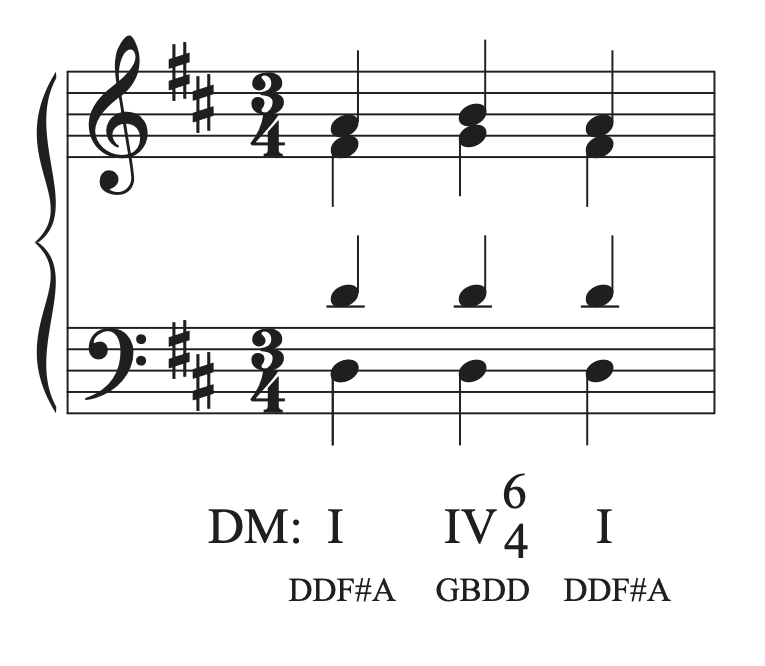
Once part writing is complete, remember to check your answer to make sure all chords use the correct notes and doubling.

